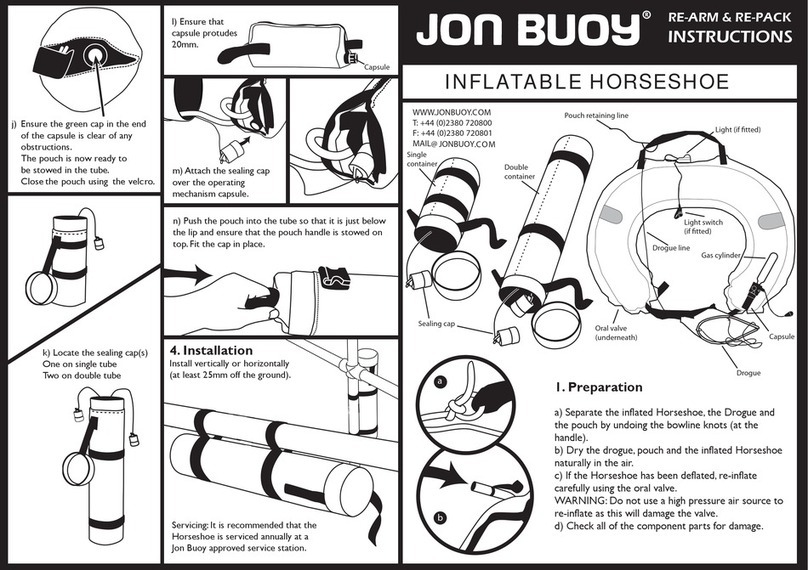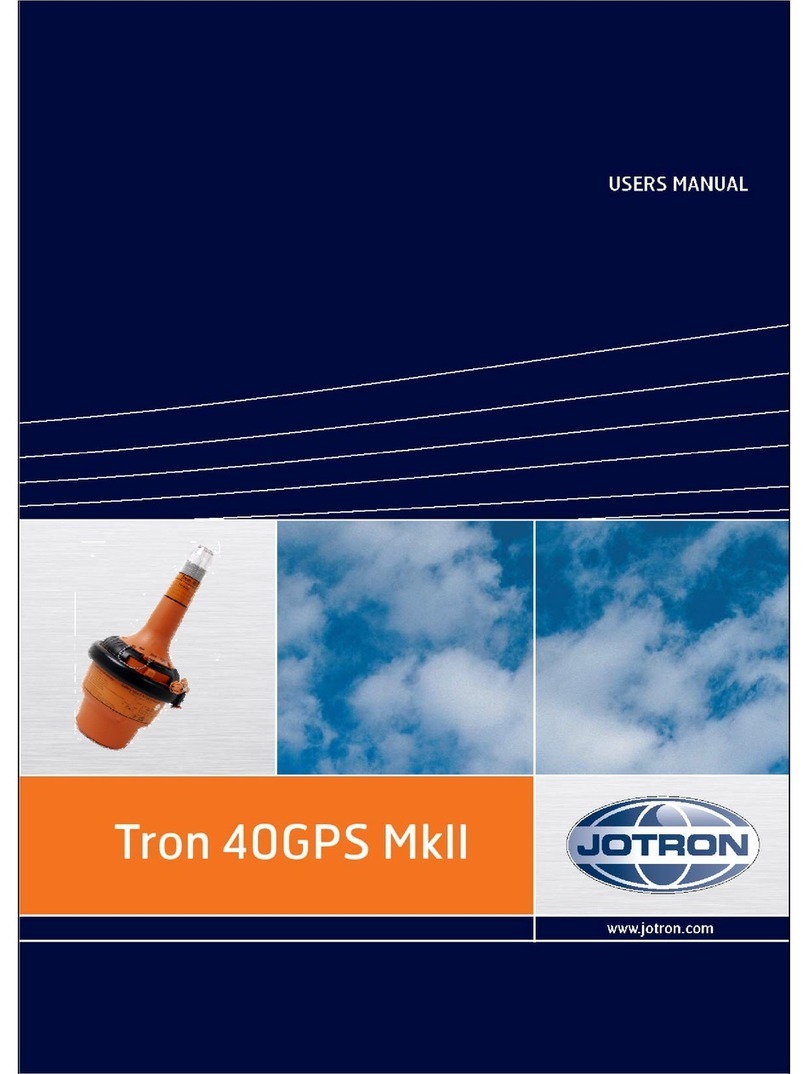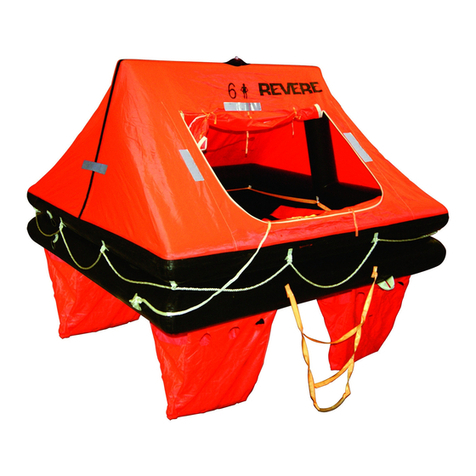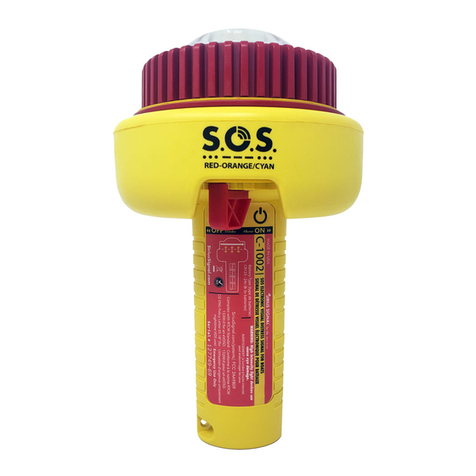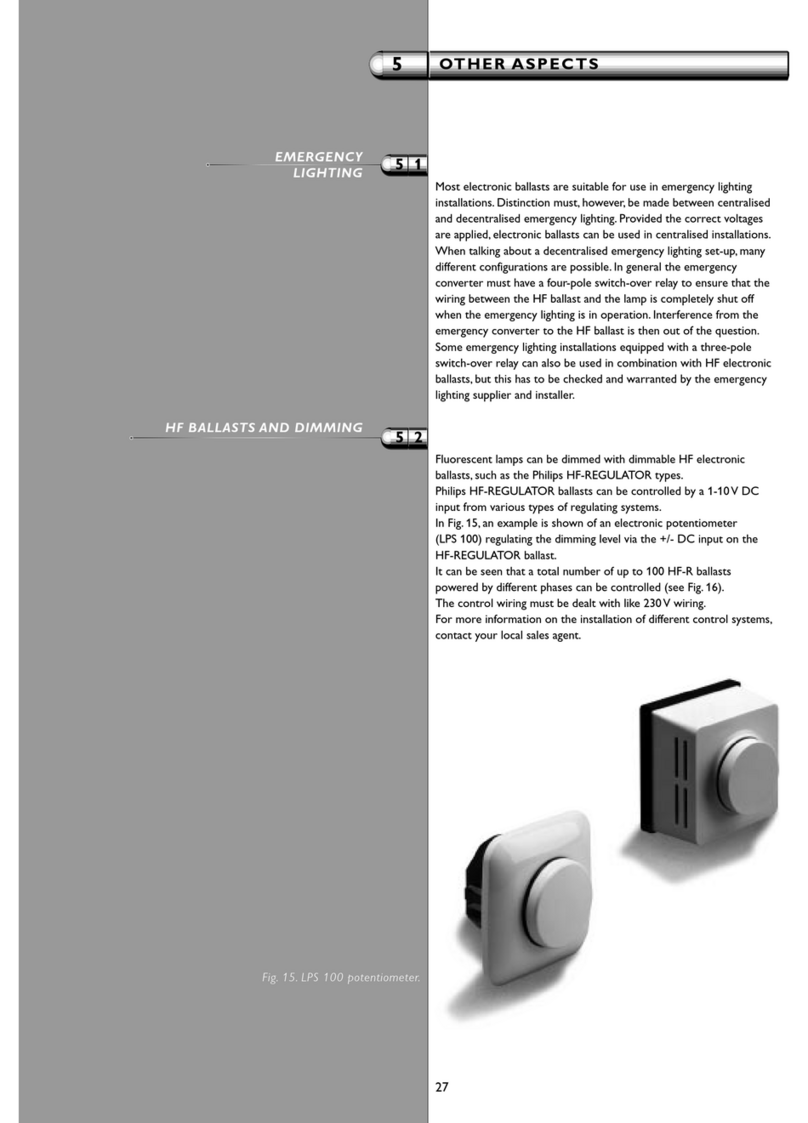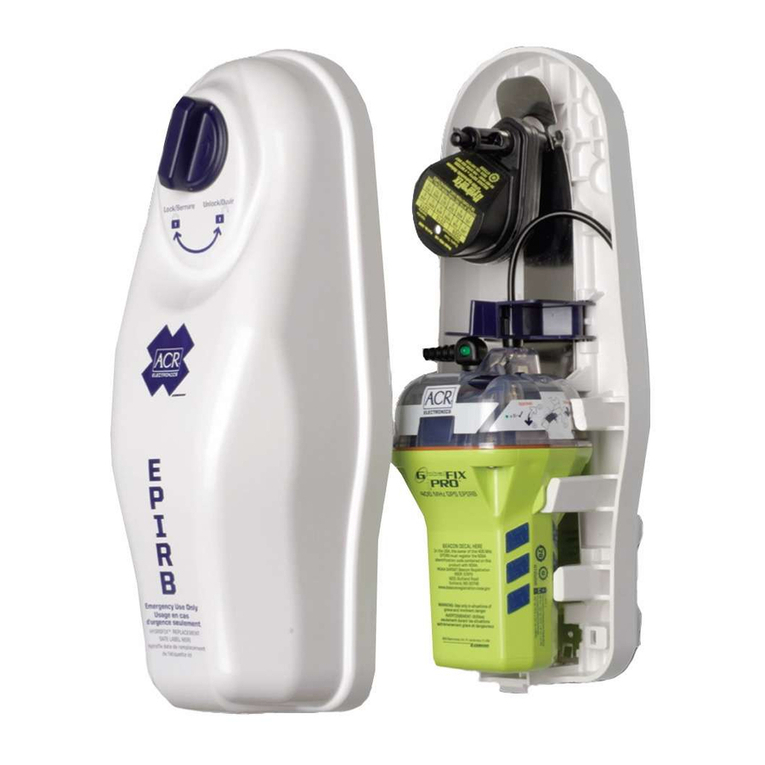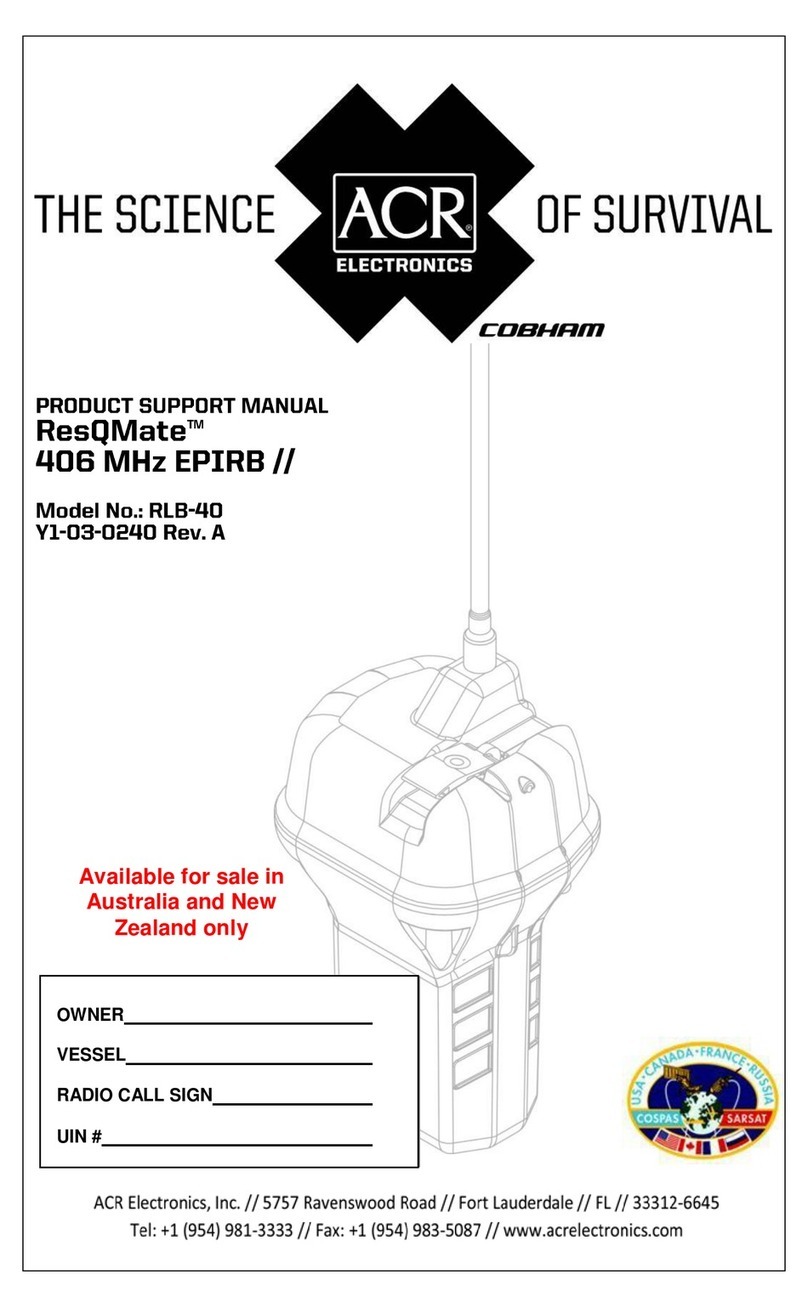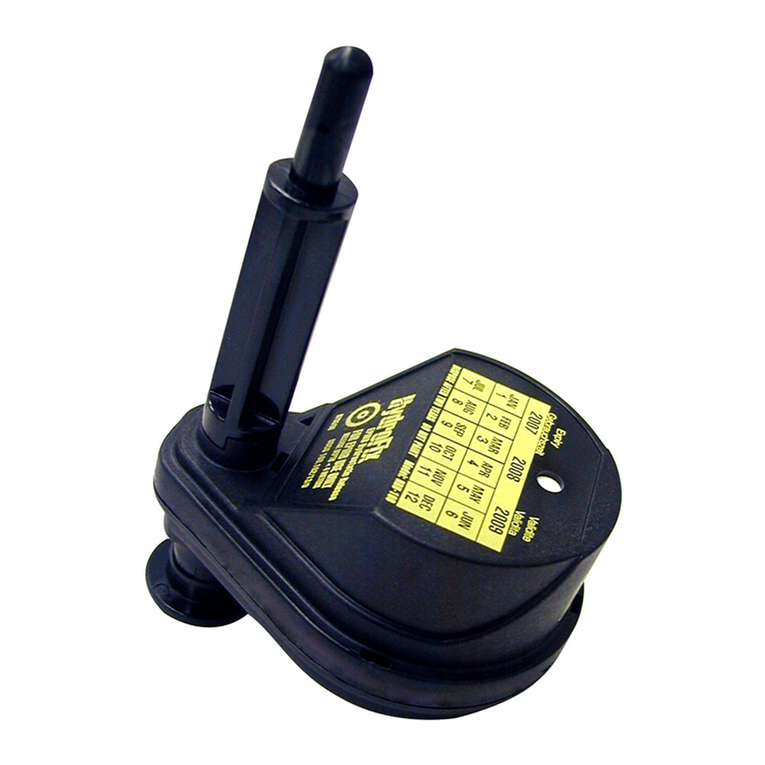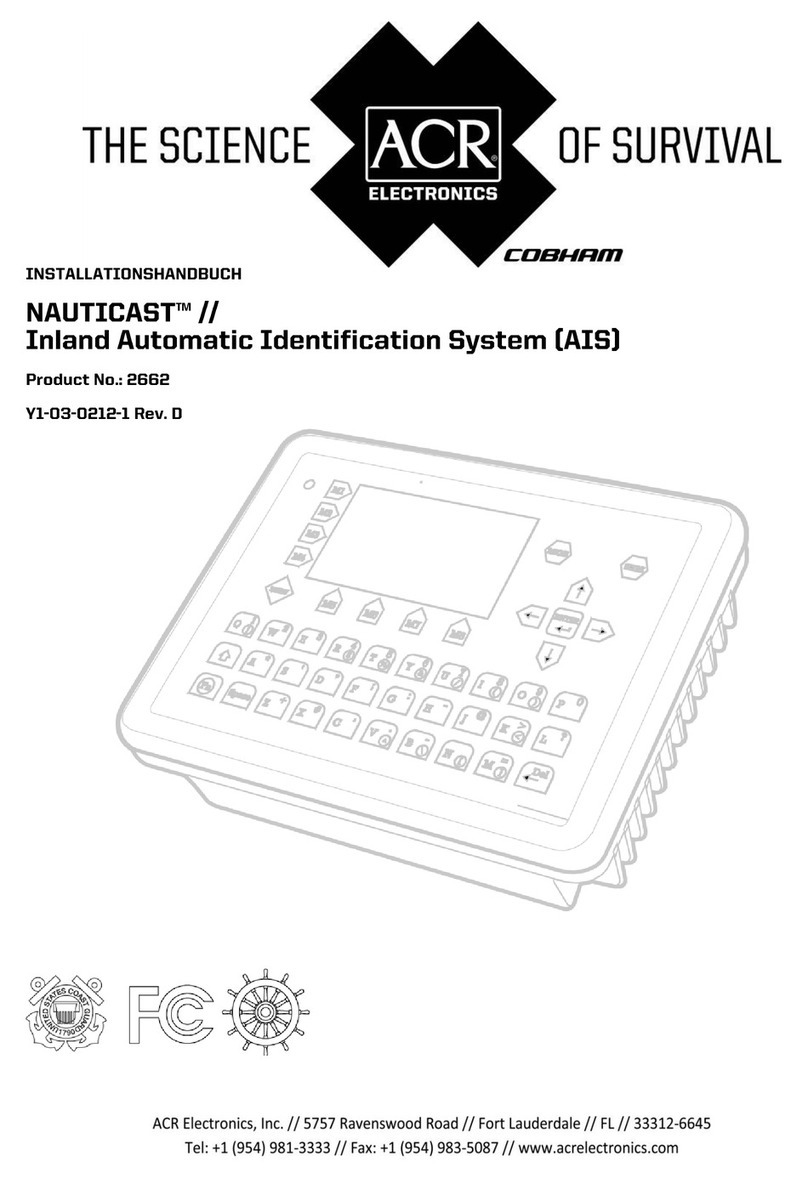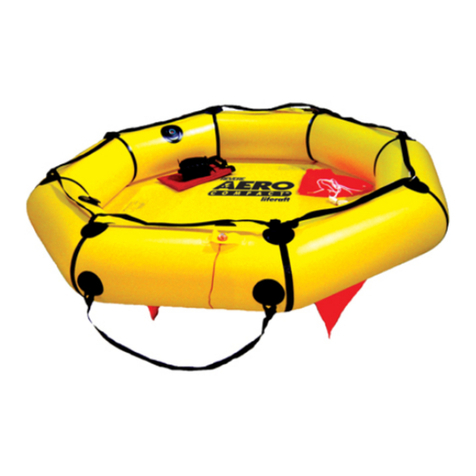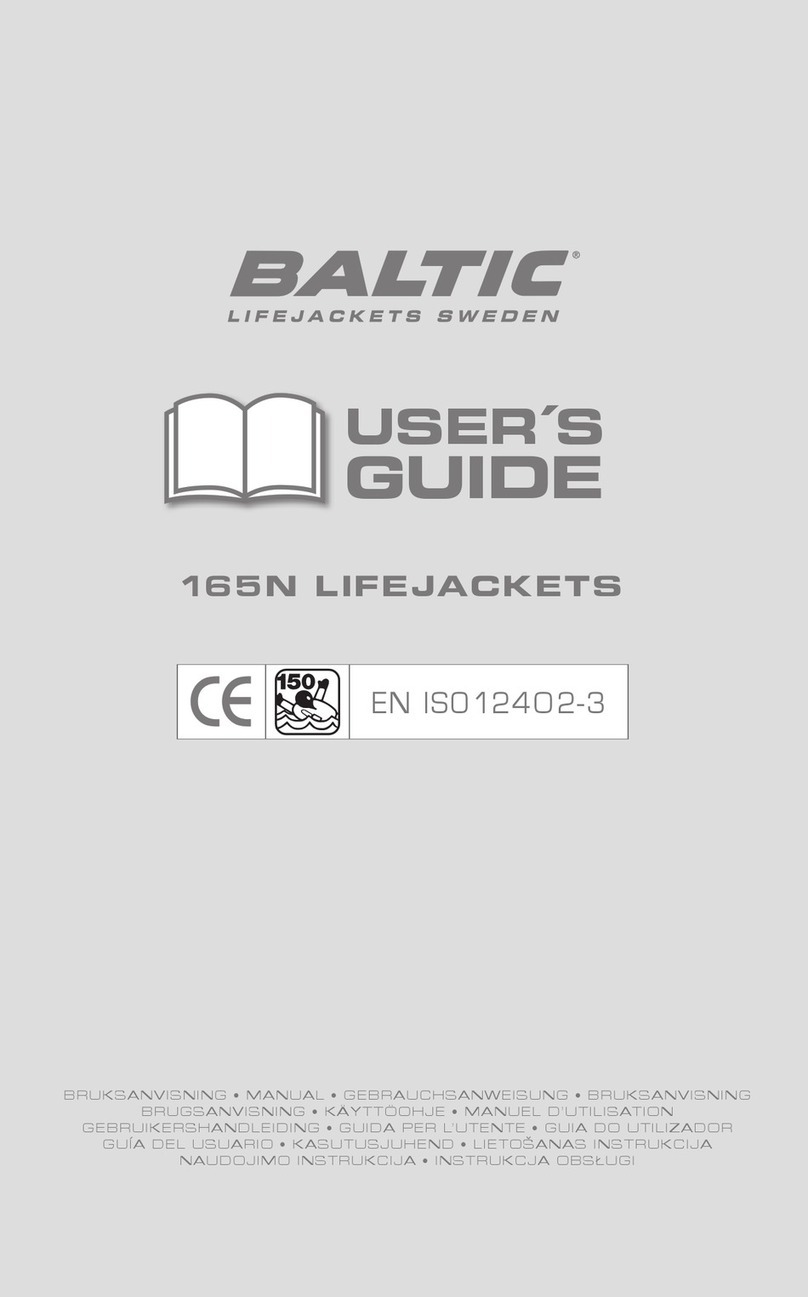
8
4.0 Display Key Functions.
ENSURE EACH CREWMEMBER IS FULLY FAMILIAR WITH ALL OF THE FOLLOWING OPERATING FUNCTIONS.
1. Power: PRESS and HOLD the ON/OFF button toactivate the unit. Green LED indicates power ON.
2. Frequency Select: 1 button cycles 3 frequencies:
121.500 MHz =(LIVE Frequency, Internationally recognised SAR homing frequency).
2.a 121.650 MHz =Test.
121.775 MHz =Normally allocated forthe Test 2 frequency.
A GREEN LED indicator will show the user the frequency selection they have made. If after 20
minutes of selecting one of the test frequencies the user has not returned to 121.5 MHz, the
unit will default back to121.5 MHz automatically.
3. Speaker Volume: The user will be able to adjust the speaker volume via two buttons; Volume Up and Volume
Down. Reducing the volume below the audible limit turns off the speaker, increasing the
volume from this point will turn the speaker back on. On power up the volume will be at its
middle setting.
4RSSI: The received signal strength indicator (RSSI) consists of 4 GREEN LED’s arranged horizontally
in the centre ofthe display and gives anindication of approximate range totarget.
5. RSI: The received signal indicator (RSI) consists of a single RED LED in the centre of the display
(the little red man symbol inside the SOS logo). THIS LED COMES ON WHEN APLB SIGNAL IS
RECEIVED. As an Anti-Collision Warning indicator the RSI will FLASH ON &OFF and the four
green LED’s will be litwhen the target is within very close range.
6. Reset: The reset button when pressed after an alarm activation puts the system into tracking mode,
switches off the alarms, resets the internal relay but does not alter the selected frequency.
7. Tone Detect: When the Tone Detect function is enabled the unit will only react to received signals
containing the downward swept tone/modulation of a Sea Marshall® PLB thereby avoiding
false alarms from rogue transmissions. AGREEN LED indicator will show this function is
enabled. Also a ‘no volt’ relay output will be activated for operating external devices. In Tone
Detect the unit is passive until an SOS signal is detected &recognised. Once an ‘SOS’ signal is
detected the internal and external alarms will sound. At this point PRESS THE ‘RESET’
BUTTON and the unit will go into tracking mode showing the bearing of the ‘SOS’ signal
relative tothe ship’s bow.
NOTE: THE SARfinder® IS DESIGNED TO BE USED IN NORMAL OPERATION/PLB
MONITORING IN TONE DETECT MODE.
8. Bearing LEDs: The Direction Finding (DF) display consists of 24 LED’s giving a bearing resolution of15°.
All bearing LED’s areRED except for the LED at 0° which is ORANGE.
9. Point toBow This point marks theship’s bow.
IMPORTANT -IN THE EVENT OF A MAN OVERBOARD MOVING OUT OF RANGE OF THE SARfinder® SYSTEM, TAKE A BEARING
TO SOSTARGET AT THAT POINT
LED BRIGHTNESS ADJUST Switch the display on, press the ON/OFF button once quickly -press and let go (if you press
and hold the SARfinder® will turn off), this puts the unit into brightness adjust mode: all LEDs
will light up so you canseethe brightness, use the + -VOLUME adjust buttons toselect the
required brightness. To exit brightness adjust quickly press and release the ON/OFF button.
